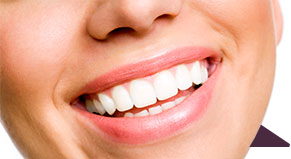 Temporomandibular joint dysfunction (TMJ) is a condition that affects the jaw, muscles that control jaw movement, and jaw joints. It is often characterized by noticeable pain and discomfort in those who suffer from it. The good news is that TMJ can be treated in a wide variety of ways, including Botox. We’re going to look at exactly what TMJ is, the causes, and how Botox can help relieve pain and suffering.
Temporomandibular joint dysfunction (TMJ) is a condition that affects the jaw, muscles that control jaw movement, and jaw joints. It is often characterized by noticeable pain and discomfort in those who suffer from it. The good news is that TMJ can be treated in a wide variety of ways, including Botox. We’re going to look at exactly what TMJ is, the causes, and how Botox can help relieve pain and suffering.
What is TMJ?
Your jaw is connected to your skull at two points via a joint called the temporomandibular. There is one joint on each side of your jaw for a total of two joints. TMJ occurs when you feel pain in and around this general area. It can cause a grating sensation or clicking sound when you move your mouth or chew.
TMJ is almost always characterized by pain or discomfort – so if you’re hearing a clicking noise and not experiencing any pain or discomfort then you probably don’t require treatment for TMJ. However, if the clicking noise is persistent, it’s usually best to see a qualified dentist who can confirm the presence of TMJ.
Symptoms of TMJ
The main symptom of TMJ is pain on or near the jaw joint. However, those who suffer from TMJ often report the following symptoms:
- Headaches
- Sore or still jaw muscles
- Inability to close the jaw/mouth all the way
- Popping sounds in ears
- Jaw clicking and popping
- Ear aches
Causes of TMJ
Medical science does not currently completely understand why TMJ happens. What is known is that there are several suspected causes of TMJ that affect a wide variety of people:
- Complications from dental surgery
- Genetic
- Hormonal
- Environmental
- Physical injury
- Arthritis
It is also suspected that women tend to suffer from TMJ more than men. It’s not completely understood why, but some doctors think that the female hormone estrogen might play some role.
Home Remedies
People who suffer from TMJ are somewhat fortunate in that it sometimes responds very well to home made remedies such as ice packs on the joint, OTC anti-inflammatory drugs, massages or gentle stretching of the jaw and neck, and avoiding chewing gum.
While the home remedies work for some people, they are not a complete cure and oftentimes only offer a few hours respite from the pain and discomfort. This is why many people seek out medical treatment from a qualified dental office. The TMJ therapy for pain relief solutions offered by a dentist are far superior to popping a couple of Advil and hoping for the best.
Botox as a Solution to TMJ
Botox is a toxin that’s been rendered 100% safe in a medical laboratory. Its primary use is cosmetic - to treat fine lines and wrinkles on people’s faces. Botox paralyzes the facial muscles that are responsible for wrinkles – giving a more youthful appearance and tighter looking skin. In recent years, many dentists have begun using Botox as a solution to treat TMJ.
Many people have found relief when injected with Botox in order to treat the pain, discomfort, and other symptoms associated with TMJ. The dentist will inject Botox directly into the chewing muscles which in turn will relax them. While Botox has not been specifically FDA approved for treatment of TMJ, it has been FDA approved for painful conditions that are usually associated with TMJ. Multiple studies have been published in various medical journals that have found that Botox offers promising results.
How Does BOTOX treat TMJ?
Botox injections paralyze the jaw muscles and prevent them from unconsciously moving about. When they are unable to move, they can no longer grind or clench. This can alleviate severe tension headaches as well as sharp pain in the jaw area. As the muscles are no longer able to be over worked, they enter into a rest phase which allows them to heal and repair themselves. This is when the symptoms of TMJ are relieved.
How long does Botox Treatment Take?
The treatment itself is quick and relatively painless. A sterile surgical needle that contains Botox is injected into the chewing muscles. The length of the procedure will be determined by how many injections the dentist feels are necessary to eliminate pain and discomfort. It will vary from person to person. The average time is anywhere from 10 to 30 minutes.
What to Expect After the Botox Treatment?
Most TMJ patients who are treated with Botox describe the needle prick as a “quick pinch.” Botox goes to work almost immediately although it can take several days to a week for the patient to experience full relief. There is no downtime and patients can return to their normal everyday activities after leaving the dental office.
Muscle tenderness should start to disappear almost immediately. It may take 24 to 48 hours before you start to see wrinkles around the injection areas start to lessen and disappear as well. It can take upwards of 1 week for the full results to be noticed.
Some patients experience bruising, slight swelling, or temporary numbness around the injection areas. This is completely normal and should diminish within a day or two.
Botox for TMJ in Chicago
If you suffer from TMJ and are looking for relief, schedule an appointment to be seen by one of our highly trained TMJ specialists. At Water Tower Dental Care, we have helped countless TMJ sufferers find relief through Botox injections. Give us a call today to learn more how we can help stop the pain and suffering.






 Website Powered by Sesame 24-7™
Website Powered by Sesame 24-7™